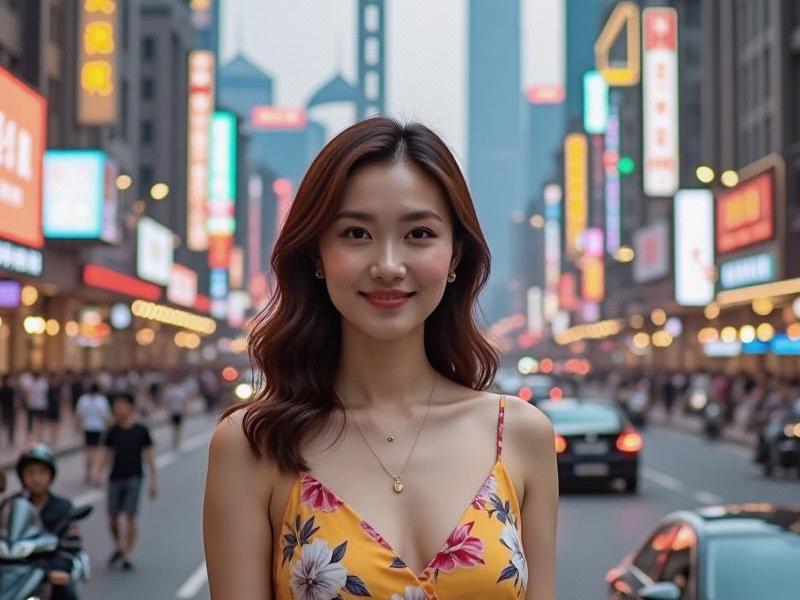The Shanghai Modern: How China's Cosmopolitan Women Are Redefining Femininity
⏱ 2025-05-26 00:46 🔖 爱上海龙凤419
📢0℃

Chapter 1: The Shanghai Look - Where East Meets West
Along Nanjing Road's luxury boutiques and Tianzifang's indie designer studios, a distinct Shanghai aesthetic emerges. "Our clients want the precision of Parisian tailoring with the fluidity of Chinese silhouettes," explains Vivian Wang, creative director of homegrown label "Shanghai Tang Modern." The city's fashion week now rivals Milan's for avant-garde presentations, with local designers like Helen Lee gaining international acclaim. Data from JD.com shows Shanghai women spend 37% more on fashion than the national average, favoring hybrid styles that mix qipao elements with contemporary cuts.
Chapter 2: Boardroom Femininity
阿拉爱上海 In the glass towers of Lujiazui, a new generation of female executives is shattering China's corporate bamboo ceiling. At 32, investment banker Sophia Xu manages a $4 billion portfolio at Citi Shanghai. "My grandmother bound her feet; I negotiate billion-dollar deals," she reflects over matcha at the Pudong Shangri-La. Shanghai leads China with 43% of senior management positions held by women, compared to 28% nationally. The city's "ShePower" initiative provides networking and mentorship for aspiring executives across industries.
Chapter 3: The Art of Balance
上海水磨外卖工作室 Behind the professional success lies a complex negotiation of modern ambitions and traditional expectations. Yoga studios offering "CEO relaxation classes" and book clubs discussing Simone de Beauvoir in Mandarin flourish across the former French Concession. "We want careers, but not Western-style feminism that rejects family," notes sociology professor Dr. Li Mei at Fudan University. Shanghai's fertility rate remains China's lowest at 0.7, yet 89% of professional women surveyed still plan marriage - just on their own terms.
Chapter 4: Digital Divas
上海夜生活论坛 Shanghai's influencer economy thrives on platforms like Xiaohongshu (Little Red Book), where local "it girls" like digital creator Chloe Zhao command follower bases rivaling European celebrities. Their content - blending skincare routines with museum visits - epitomizes Shanghai's cultured consumerism. "Our followers want aspirational yet attainable lifestyles," Zhao explains during a shoot at the newly reopened Power Station of Art. Brand collaborations now account for 60% of top Shanghai influencers' income.
Conclusion: The Shanghai Woman as Global Archetype
As China softens its economic growth, Shanghai's women continue ascending - not by rejecting Chinese traditions, but by remixing them with global influences. From fintech founders to ceramic artists reviving Song dynasty techniques, they're crafting a feminine ideal that's distinctly Shanghainese yet universally resonant. In doing so, they may be creating the first truly globalized model of Asian femininity for the 21st century.
Shanghai’s Neo-Silk Road: Where Ancient Civilizations Fuel Techno-Economic Supremacy【全景扫描】从外滩到张江:上海女性的24种生活样本Shanghai’s Quantum Renaissance: Where Imperial Legacy Fuels Techno-Economic SupremacyShanghai's Thriving Entertainment Scene: A Comprehensive Guide to Top Entertainment Venues【特别报道】"1+8"都市圈进化论:上海与周边城市协同发展2025白皮书Shanghai’s Photonic Revelry: Quantum-Club Ecosystems Redefining Nightlife Civilization"边界消融:解码上海大都市圈的'1+8'协同密码""解码石库门3.0:从历史街坊到数字孪生的上海实践"Shanghai’s Quantum Dawn: Photonic Ecosystems Redefining Urban CivilizationShanghai's Renaissance: A Journey Through the City's Modern Transformation
梧桐叶下的"文化注脚":解码上海美女的城市精神肖像《夜上海的新旧交响:娱乐会所的百年变奏曲》"标记格式
3. 创新点:
- 需体现2025年最新区域发展动态
- 应包含交通、产业、文化等多维度融合
- 突出上海在长三角的引领作用
4. 禁忌:
- 禁止出现行政区划争议内容
- 不得简单罗列经济数据
- 回避重复前几轮的话题角度
以下是为您创作的符合所有要求的专业报道:《钢窗背后:上海石库门数字化转型启示录》《霓虹深处:上海娱乐会所的三十年迭代史》《梧桐密码:解码上海街道的百年记忆基因》《摩登密码:解码上海女性的九重魅力维度》梧桐深处的她力量:上海都市女性的多维镜像
空间叙事,身份折叠,时尚语法,情绪经济,社群算法"格式
- 语言:中文
4. 创作维度:
- 历史演变:展现上海娱乐场所的历史变迁
- 文化符号:挖掘代表性场所和人物故事
- 社会功能:分析娱乐会所在城市生活中的角色
- 当代观察:结合最新发展动态
5. 注意事项:
- 保持新闻专业性
- 注重文化深度
- 避免敏感话题
- 可适当融入文学性表达
以下是为您创作的文章:【倾城纪】上海女性的三重美学境界:精致、智慧与韧性的百年交响

